Velleman VL1212 Handleiding
Velleman
Batterij-oplader
VL1212
Bekijk gratis de handleiding van Velleman VL1212 (29 pagina’s), behorend tot de categorie Batterij-oplader. Deze gids werd als nuttig beoordeeld door 43 mensen en kreeg gemiddeld 4.6 sterren uit 22 reviews. Heb je een vraag over Velleman VL1212 of wil je andere gebruikers van dit product iets vragen? Stel een vraag
Pagina 1/29

VL0612 / VL1212 – FULLY AUTOMATIC CHARGING SYSTEM FOR LEAD-ACID BATTERIES (6V / 12V)
1. Introduction
To all residents of the European Union
Important environmental information about this product
This symbol on the device or the package indicates that disposal of the device after its lifecycle could harm
the environment.
Do not dispose of the unit (or batteries) as unsorted municipal waste; it should be taken to a specialised
company for recycling.
This device should be returned to your distributor or to a local recycling service.
Respect the local environmental rules.
If in doubt, contact your local waste disposal authorities.
Thank you for buying the VL0612 / VL1212! Please read the manual thoroughly before bringing this device into service.
If the device was damaged in transit, don't install or use it and contact your dealer. This manual contains important
safety and operating instructions, please keep it for future reference.
2. Safety Instructions
WARNING: RISK OF EXPLOSIVE GASES. Working in the vicinity of a lead-acid battery is dangerous.
Batteries generate explosive gases during normal battery operation. For this reason, you should carefully
read and follow these instructions.
1. Keep away from children and unqualified persons.
2. To reduce the risk of battery explosion, follow these instructions and those marked on the battery carefully.
3. Never smoke or allow an open spark or flame in the vicinity of the battery or engine.
4. Do not expose the charger to rain or snow. For indoor use only.
5. The use of attachments not recommended or sold by the battery charger manufacturer may result in a risk of fire,
electric shock or personal injury.
6. To reduce the risk of damage to the electric plug and cord, pull the plug and not the cord when disconnecting the
charger.
7. Make sure the cord cannot be stepped on, tripped over or is not otherwise subjected to damage or stress.
8. Study all the battery manufacturer's specific precautions such as removing or not removing cell caps while
charging and recommended rates of charge.
9. Do not use the battery charger unless the battery voltage matches the output voltage rating of the charger.
10. Do not operate the charger in a closed-in area or in an area with restricted ventilation.
11. An extension cord should not be used unless absolutely necessary. The use of an improper extension cord could
result in a risk of fire and electric shock. If an extension cord must be used, make sure that:
a. the pins on the plug of the extension cord are the same number, size and shape as those of the charger plug.
b. the extension cord is properly wired and in good electrical condition.
c. the wire size is as specified in table 1 below. Do not operate the charger with damaged power core or plug.
d. The supply cord cannot be replaced. If the cord is damaged, the appliance should be discarded.
Cord length feet / metre 25ft / 7.60m 50ft / 15.25m 100ft / 30.50m 150ft / 45.75m
AWG cord size, table 1 18 18 18 18
12. To reduce the risk of electric shock, unplug the charger from the outlet before you start any maintenance or
cleaning activities.
13. Damage caused by disregard of certain guidelines in this manual is not covered by the warranty and the dealer
will not accept responsibility for any ensuing defects or problems.
14. All modifications of the device are forbidden for safety reasons. Damage caused by such modifications is not
covered by the warranty.

VL0612/VL1212_v2 VELLEMAN 2
3. Personal Precautions
1. Someone should be within range of your voice or close enough to come to your aid when you work near a lead-
acid battery.
2. Have plenty of fresh water and soap nearby in case acid contacts your skin, clothes or eyes.
3. Wear complete eye protection and protective clothing. Avoid touching your eyes when working with batteries.
4. If battery acid comes into contact with your skin or clothing, immediately wash with soap and water. Should it
come into contact with your eyes, immediately rinse with running cold water for at least 10 minutes and seek
immediate medical attention.
5. NEVER smoke or allow a spark or flame in the vicinity of a battery or engine.
6. Avoid the risk of metal objects falling onto the battery. This might spark or short-circuit the battery or other
electrical parts which may cause an explosion.
7. Remove all personal items such as rings, bracelets, necklaces and watches when working with a lead-acid
battery. A lead-acid battery can produce a short-circuited current high enough to weld a ring or the like to metal
causing a severe burn.
8. Use the charger for charging a rechargeable lead-acid battery ONLY. It is not intended to supply power to a low-
voltage system or to charge rechargeable batteries other than lead-acid batteries. Charging dry-cell batteries may
cause them to burst and cause injury to persons and damage to property.
9. NEVER charge a frozen battery.
4. Preparation
1. If it is necessary to remove the battery from the vehicle to charge it, always remove the grounded terminal from
the battery first. Make sure all accessories in the vehicle are turned off in order to prevent an arc.
2. Be sure the area around the battery is well-ventilated while the battery is being charged. Using a piece of
cardboard or other non-metallic material can be used to dissipate gas.
3. Clean the battery terminals. Avoid corrosion from coming into contact with your eyes.
4. Add distilled water to each cell until the battery acid reaches the level specified by the manufacturer. This helps
purge excessive gas from the cells. Do not overfill. For a battery without cell caps, carefully follow the
manufacturer's instructions.
5. Study all the manufacturer's specific precautions such as removing or not removing cell caps while charging and
recommended charging rates.
6. Determine the battery voltage by referring to the car's manual and make sure it matches the battery charger's
output rating.
5. Positioning the charger
1. Position the charger as far away from the battery as the DC cables permit.
2. Never place the charger directly above or below the ba fluid from the battery will ttery being charged. Gases or
corrode and damage the charger.
3. Never allow battery acid to drip on the charger when filling the battery.
4. Do not operate the charger in a closed-in area or in an area with restricted ventilation.
5. Do not put the battery on top of the charger.
6. Connecting the charger
Only connect or disconnect the DC-output clips after setting the charger switches to "off" and removing the AC cord
from the electric outlet. Never allow the clips to touch each other.
a. Follow these steps when the battery is installed in a vehicle:
A spark near the battery may cause battery explosion. To reduce the risk of a spark near the battery:

VL0612/VL1212_v2 VELLEMAN 3
1. position the AC and DC cords so they cannot be damaged by the hood, a door or a moving engine part.
2. stay clear of fan blades, belts, pulleys, and other parts that can cause personal injuries.
3. check the polarity of post usually has a larger diameter than the the battery posts. A positive (pos, p+) battery
negative (neg., n-) post.
4. determine which battery post is connected to the chassis (in other words, which battery post is grounded). If
the negative post is grounded (as in most vehicles), see item 5. If the positive post is grounded, see item 6.
5. for a negative-grounded vehicle, connect the positive (red) clip from the battery charger to the positive
ungrounded post of the battery first. Then connect the negative (black) clip to the vehicle chassis of the engine
block but stay clear of the battery and fuel line. Do not connect the clip to the carburettor, fuel lines or any
sheet metal parts. Connect it to a heavy gauge metal part of the frame or engine block.
6. for a positive-grounded vehicle, connect the negative (black) clip from the battery charger to the negative (neg,
n.-) ungrounded post of the battery first. Connect the positive (red) clip to the vehicle chassis or engine block
but stay clear of of the battery and fuel line. Do not connect the clip to the carburettor, fuel lines or any sheet
metal parts. Connect it to a heavy gauge metal part of the frame or engine block.
7. connect the charger to an electric outlet with the supplied power cord.
8. when disconnecting the charger, disconnect the AC cord, remove the clip from the vehicle chassis and then
remove the clip from the battery terminal.
b. Follow these steps when the battery is outside the vehicle:
A spark near the battery may cause battery explosion. To reduce the risk of a spark near the battery:
1. check the polarity of post usually has a larger diameter than the the battery posts. A positive (pos, p+) battery
negative (neg., n-) post.
2. connect an insulated battery output cable of at least 1.8m and 0.75mm³ from the charger to the negative (neg.
n.-) battery post.
3. connect the positive (red) charger clip to the positive (pos, p.+) post of the battery.
4. hold the free end of the cable as far away from battery as possible, then connect the negative (black) charger
clip to the free end of the cable.
5. do not face the battery when making the final connection.
6. connect the charger to an electric outlet with the supplied power cord.
7. when disconnecting the charger, always proceed in reverse order of connection and sever the first connection
while standing as far away from the battery as possible.
7. User instructions
a. Automatic monitoring
Your new battery charging system is completely automatic and can be left on whenever there is input power
available. The charger output depends on the condition of the battery it is charging. When the battery is fully charged,
the indicating light will turn green and the charger will automatically switch to storage charge mode and monitor and
maintain the battery at full charge.
b. Cable connections
The battery charging system is equipped with two output leads, a red positive lead and a black negative lead. Only
connect or disconnect the output leads before plugging into an AC power outlet.
For all battery types: connect the red positive (+) lead to the positive terminal of the battery. Connect the black
negative lead (-) to the negative terminal of the battery.
If the charger is connected to a battery for long periods of time, check the water levels as directed by the battery
manufacturer as to ensure they remain at the proper level.
Product specificaties
| Merk: | Velleman |
| Categorie: | Batterij-oplader |
| Model: | VL1212 |
Heb je hulp nodig?
Als je hulp nodig hebt met Velleman VL1212 stel dan hieronder een vraag en andere gebruikers zullen je antwoorden
Handleiding Batterij-oplader Velleman

9 Juli 2023

5 Juli 2023

4 Juli 2023

3 Juli 2023

2 Juli 2023

2 Juli 2023

2 Juli 2023

1 Juli 2023

1 Juli 2023

1 Juli 2023
Handleiding Batterij-oplader
- Lockncharge
- Savio
- Hitachi
- Goobay
- Karma
- ALLWEI
- Huawei
- Elinchrom
- Yato
- AVer
- Nitecore
- Projecta
- Draper
- NAV-TV
- Aluratek
Nieuwste handleidingen voor Batterij-oplader
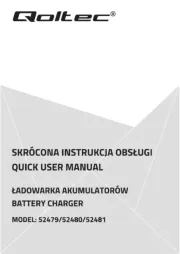
12 September 2025
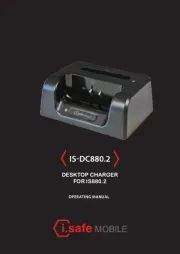
8 September 2025
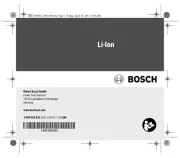
2 September 2025
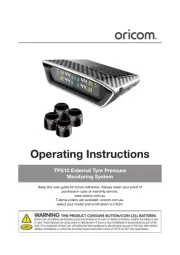
1 September 2025
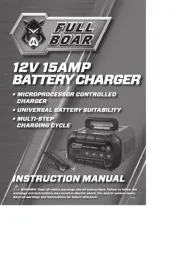
1 September 2025
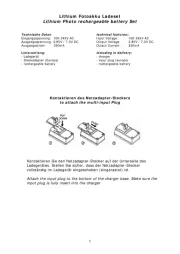
27 Augustus 2025
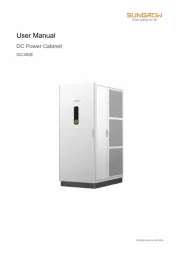
26 Augustus 2025
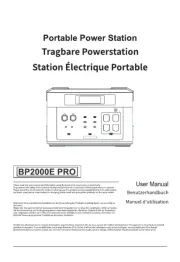
26 Augustus 2025
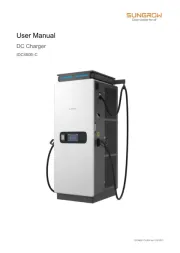
25 Augustus 2025
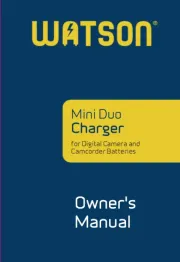
15 Augustus 2025